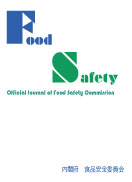
- 4 号 p. 65-
- 3 号 p. 41-
- 2 号 p. 25-
- 1 号 p. 21-
- |<
- <
- 1
- >
- >|
-
Taira Miyahara, Takumi Nishiuchi, Nao Fujikawa, Taichi Oguchi, Akira K ...2023 年 11 巻 1 号 論文ID: D-22-00010
発行日: 2023年
公開日: 2023/03/24
[早期公開] 公開日: 2023/02/11ジャーナル オープンアクセス HTML
電子付録“Transgrafting” is a grafting procedure whereby a transgenic plant body is grafted to a non-transgenic plant body. It is a novel plant breeding technology that allows non-transgenic plants to obtain benefits usually conferred to transgenic plants. Many plants regulate flowering by perceiving the day-length cycle via expression of FLOWERING LOCUS T (FT) in the leaves. The resulting FT protein is translocated to the shoot apical meristem via the phloem. In potato plants, FT is involved in the promotion of tuber formation. Here we investigated the effects of a genetically modified (GM) scion on the edible parts of the non-GM rootstock by using potato plants transformed with StSP6A, a novel potato homolog of the FT gene. Scions prepared from GM or control (wild-type) potato plants were grafted to non-GM potato rootstocks; these were designated as TN and NN plants, respectively. After tuber harvest, we observed no significant differences in potato yield between TN and NN plants. Transcriptomic analysis revealed that only one gene—with unknown function—was differentially expressed between TN and NN plants. Subsequent proteomic analysis indicated that several members of protease inhibitor families, known as anti-nutritional factors in potato, were slightly more abundant in TN plants. Metabolomic analysis revealed a slight increase in metabolite abundance in NN plants, but we observed no difference in the accumulation of steroid glycoalkaloids, toxic metabolites found in potato. Finally, we found that TN and NN plants did not differ in nutrient composition. Taken together, these results indicate that FT expression in scions had a limited effect on the metabolism of non-transgenic potato tubers.
抄録全体を表示PDF形式でダウンロード (8369K) HTML形式で全画面表示
-
Food Safety Commission of Japan2023 年 11 巻 1 号 p. 21-24
発行日: 2023年
公開日: 2023/03/24
ジャーナル オープンアクセス HTMLFood Safety Commission of Japan (FSCJ) conducted a risk assessment of pyridachlometyl (CAS No.1358061-55-8), a pyridazine fungicide, based on results from various studies. The data used in the assessment include the fate in plants (wheat, sugar beet and others), residues in crops, fate in livestock (goats and chickens), residues in livestock, fate in animals (rats), and tests of subacute toxicity (rats, mice and dogs), chronic toxicity (dogs), combined chronic toxicity/carcinogenicity (rats), carcinogenicity (mice), two-generation reproductive toxicity (rats), developmental toxicity (rats and rabbits), genotoxicity and others. The major adverse effects of pyridachlometyl in experimental animals were observed in body weight (suppressed body weight gain), thyroid (increased weight, hypertrophy of follicular epithelial cell: rats and mice) and liver (increased weight, hepatocellar hypertrophy). No adverse effects were observed in the tests of fertility, teratogenicity or genotoxicity. The lowest no-observed-adverse-effect level (NOAEL) obtained from all the studies was 8 mg/kg bw per day in a two-year combined chronic toxicity/carcinogenicity study in rats. FSCJ specified an acceptable daily intake (ADI) of 0.08 mg/kg bw per day by applying a safety factor of 100 to the NOAEL. It is unnecessary to specify an acute reference dose (ARfD) because of adverse effects not expected to occur via a single administration of pyridacholometyl.
抄録全体を表示PDF形式でダウンロード (577K) HTML形式で全画面表示
- |<
- <
- 1
- >
- >|